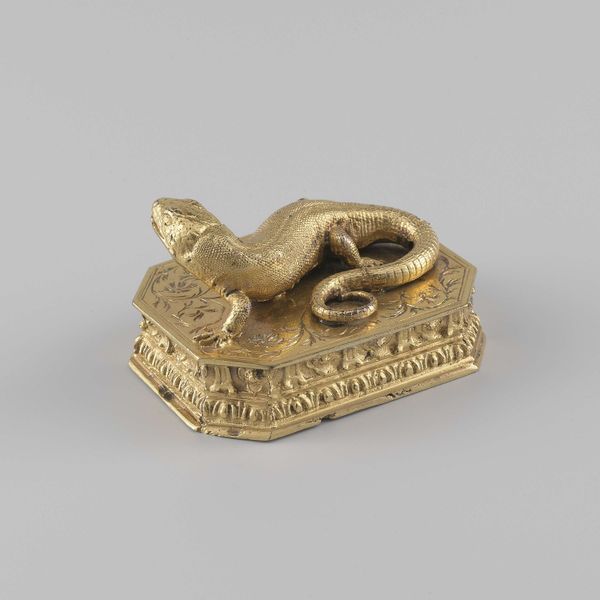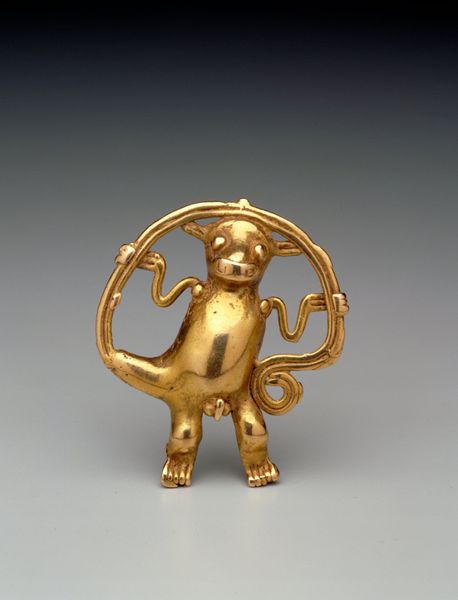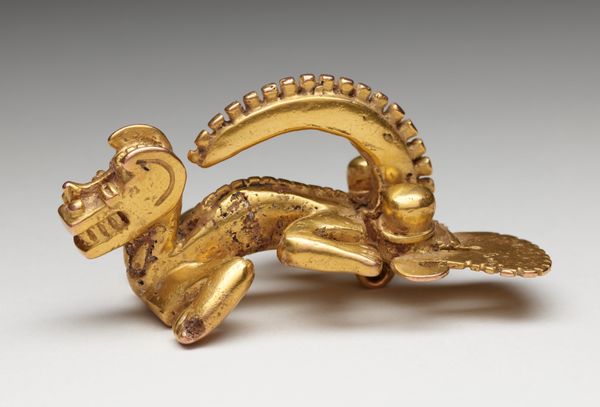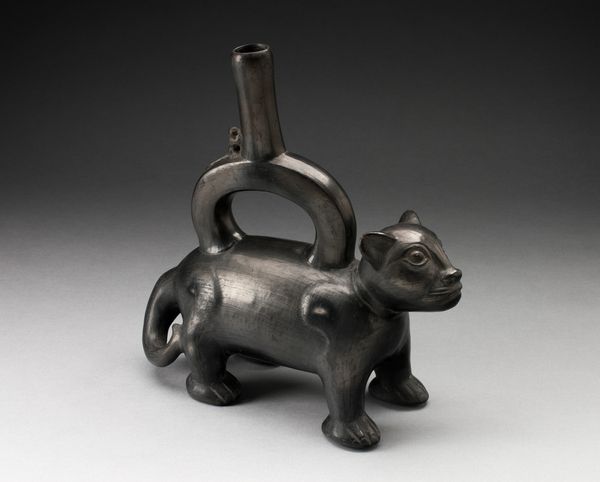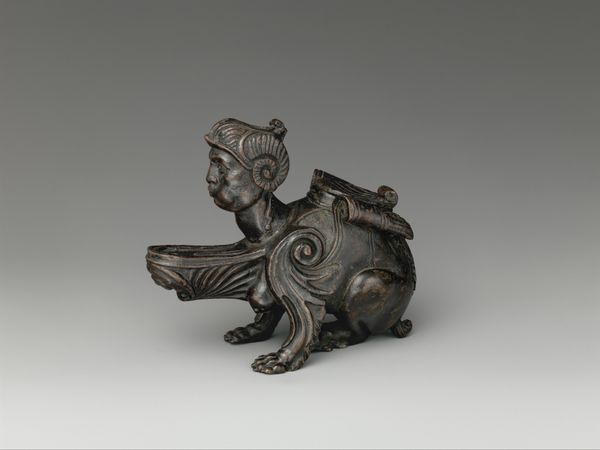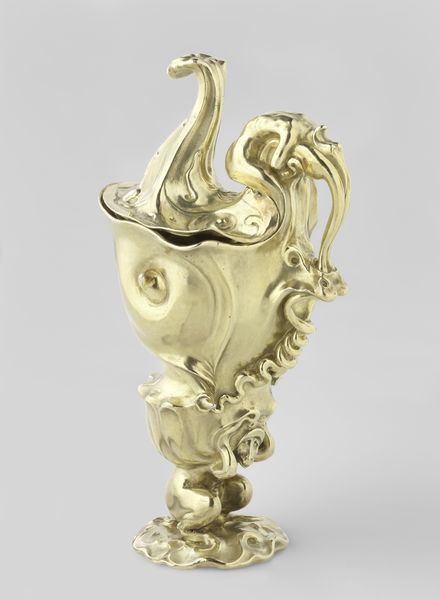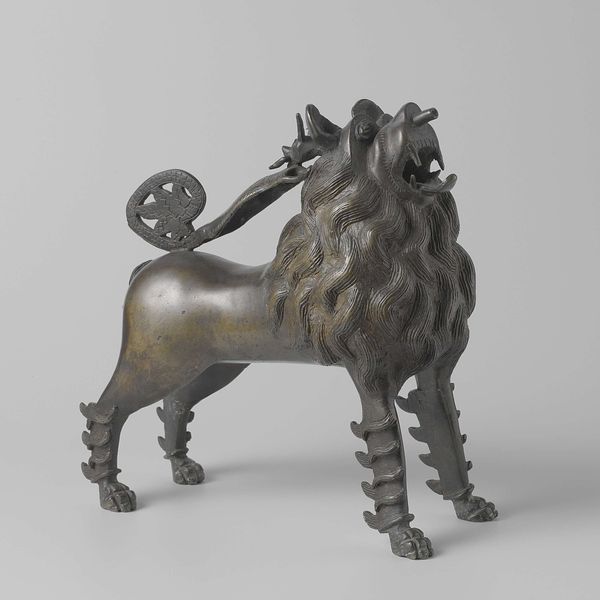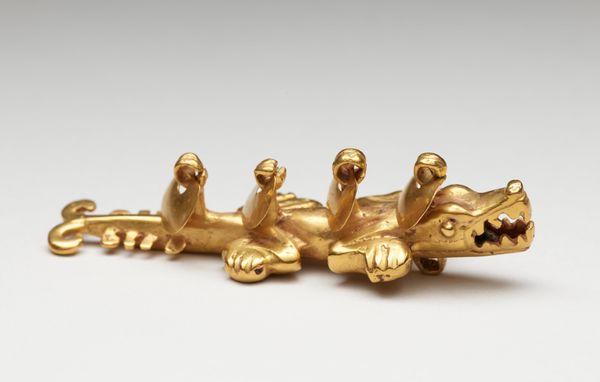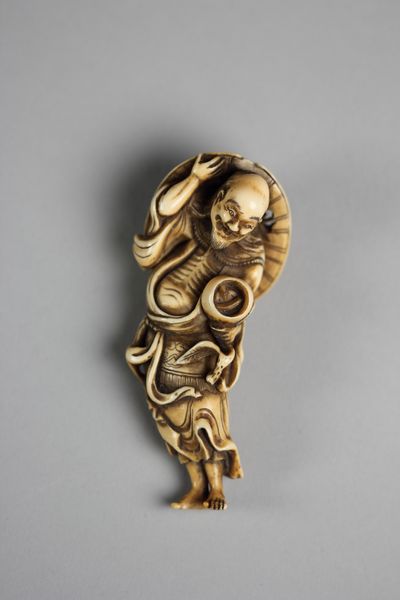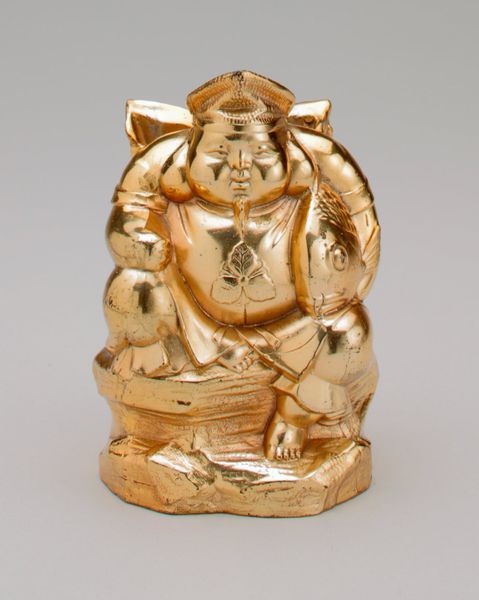
gold, sculpture
#
gold
#
sculpture
#
indigenous-americas
Copyright: Public Domain
Curator: So, what catches your eye first about this Diquis pendant, crafted somewhere between the 9th and 15th centuries? Editor: Its pure gleam. You can almost feel the sun beating down on it. Makes you wonder about the hands that shaped such intense gold. Was it dug up, panned from a river… I’m instantly curious about the source, the labor involved in procuring that raw material. Curator: It's captivating, isn't it? Looking at it, I imagine someone carefully selecting the perfect nugget, melting it down, shaping it with meticulous detail. It feels charged with intention and maybe ceremony, designed to hold significance beyond simple adornment. Editor: Ceremony is right. Think of the societal stratification it implies. Gold was likely reserved for elites. The skill to work this material indicates specialized labor, resources carefully allocated. I see power dynamics encoded in the sheen. Curator: Yes, but consider what those dynamics valued. The intricate craftsmanship suggests an honoring of nature, perhaps a reverence for the animals represented here. See the curled antennae, suggestive of a cicada or beetle, the bulbous body hinting at fertility and renewal. I think they may have worn it to harness qualities of nature, hoping to bring power and energy from it. Editor: That connection is likely present but inseparable from economic considerations. Were such natural sources considered communally held or the strict purview of specific individuals who controlled distribution of the golden icon? What does its placement in this museum tell us about this legacy, its display and contextualization today? Curator: Those are exactly the critical questions to ask ourselves. Maybe we can think of it as the intersection of ingenuity and exploitation; that complexity makes it all the more worth appreciating and reckoning with. Editor: Absolutely. Seeing something so intrinsically valuable recast within contemporary dialogue prompts deep thought about what constitutes ‘value’ across centuries. I find this object really provocative as it opens these vital pathways to conversation. Curator: It becomes a mirror, doesn't it? Reflecting not only the light but also the weight of our history and present choices. I agree. Editor: Exactly, a lens to reflect labor practices and the shifting status of precious materials across time.
Comments
No comments
Be the first to comment and join the conversation on the ultimate creative platform.
